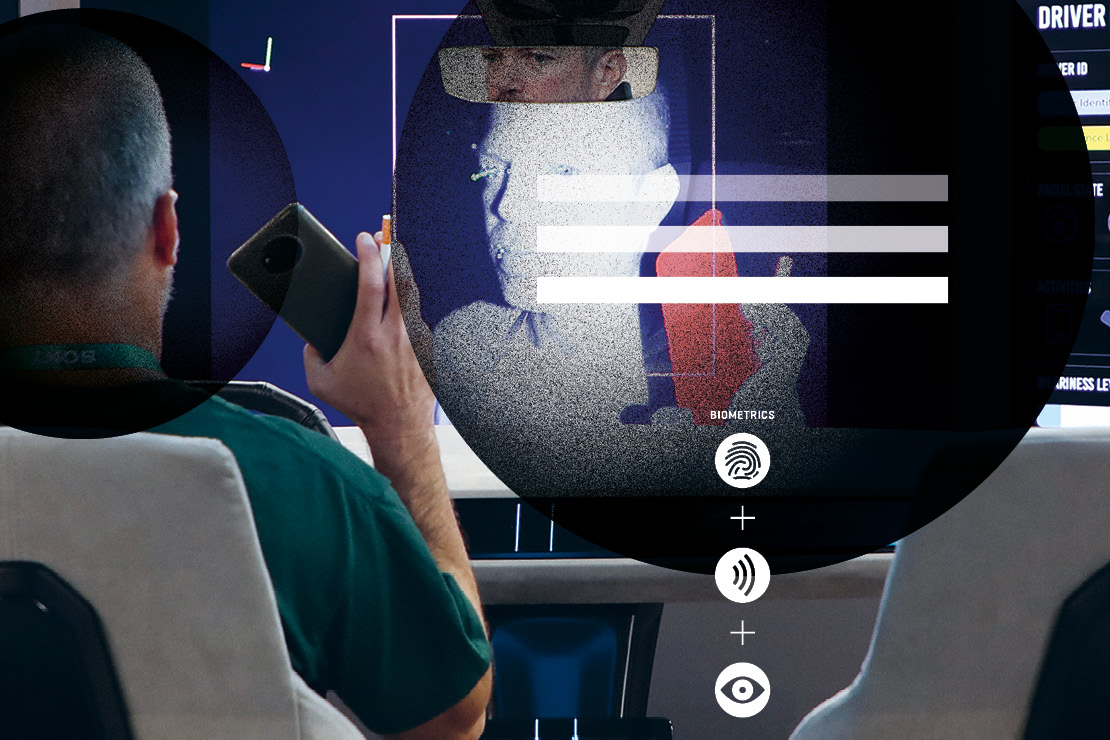
Gentex Corporation
Helping Map the Drive Toward an Autonomous Future
Vice President of Engineering, Gentex Corporation
The current push for self-sufficient, autonomous vehicles is nearly three decades old, demonstrating that it’s often easier to theorize about a preferred future state than it is to chart a course that takes you there.
At Gentex, we’re cultivating emerging technology paths to develop features that evolve and migrate seamless from today’s automobiles through transitionary technologies and ultimately into self-driving vehicles. Our goal is to provide robust technology platforms that help us make real progress toward the autonomous age.
A Development Platform for Driver Monitoring
For decades, Gentex has managed the evolution of automotive rear vision. We use the rearview mirror (and surrounding windscreen) as a strategic electronic module that helps automakers introduce sophisticated, revenue-producing electronic features to the car quickly, affordably, in a high-performance, cross-platform location. Over the years, we’ve integrated more than 100 different features in and around the mirror, including glare elimination, cameras, microphones, displays, telematics components, transactional modules, car-to-home automation, security components, ADAS features, and now – driver monitoring systems (DMS).
The mirror is integrated up high on the windscreen, providing a superior view of the vehicle cabin, which makes it an excellent location for cameras and related electronics. Because the mirror is also adjusted by each driver for optimal viewing, it’s generally aligned to the driver’s face. Its location also minimizes intentional and accidental occlusions. In addition, the mirror location affords views of the passengers and much of the vehicle interior, so that as DMS progresses into cabin monitoring, it will help to accommodate next-generation functionality.
Mirror integration also allows DMS to share common electronics with the mirror’s additional features. For instance, to help the industry transition from analog to digital rear vision, Gentex launched a Full Display Mirror (FDM), an intelligent rear vision system that uses a custom camera and mirror-integrated LCD to stream live video of the rearward scene to the driver. It provides a crisp, clear, unobstructed panoramic view behind the vehicle, and can also be used to display ADAS alerts and DMS notifications. The FDM also contains a mirror-integrated CPU that processes the video in the mirror head. This same CPU could be harnessed to perform edge-computing functions related to DMS, reducing latency and improving system performance.
Finally, mirror integration offers a cross-platform solution so that camera and system integration doesn’t need to be engineered and tooled for each individual vehicle. It also means economies of scale can be obtained in the production process. This makes it a quick-to-market solution that allows OEMs to swiftly introduce DMS into the market and begin assessing, tweaking, and improving the system while building feature awareness. With the core components in a consistent location, automakers can add functionality in an iterative fashion across multiple vehicle platforms while quickly improving their Euro NCAP ratings.
By quickly introducing DMS systems today and developing robust sensor fusion and digital olfaction techniques, we can develop the transitional technologies necessary to move beyond DMS into broader cabin monitoring systems and into the autonomous age.
A Digital Sense of Smell
As part of Gentex’s DMS roadmap, we’ve also dual-pathed the development of a DMS system that utilizes overhead-console-based imagers and emitters, which will be essential as we progress from passenger vehicles to rideshare and autonomous vehicles. Also critical in this vehicle environment is machine olfaction – a digital sense of smell. Gentex is developing digital olfaction technologies capable of detecting a wide range of airborne contaminants to help fleet operators protect passengers while constantly monitoring the vehicle’s condition and air quality.
Gentex’s emerging sensing technologies stem from our experience in fire protection, an industry in which we’ve operated for nearly 50 years. Gentex pioneered the world’s first dual-sensor photoelectric smoke detector, a device less prone to false alarms yet quick to detect slow, smoldering fires. Today, millions of Gentex smoke detectors and signaling devices can be found in hospitals, hotels, office buildings and other commercial properties around the world.
We’re also developing a unique nanofiber sensing technology capable of detecting a wide variety of chemicals. Chemical detection will also be critical to passenger safety and the ongoing maintenance of autonomous fleets. In-vehicle chemical detection could continually sample autonomous vehicle air quality to help identify explosives or incendiary components, biohazards, illicit drugs such as marijuana and Fentanyl, and pollutants such as ammonia and other VOCs.
By quickly introducing DMS systems today and developing robust sensor fusion and digital olfaction techniques, we can develop the transitional technologies necessary to move beyond DMS into broader cabin monitoring systems and into the autonomous age.



